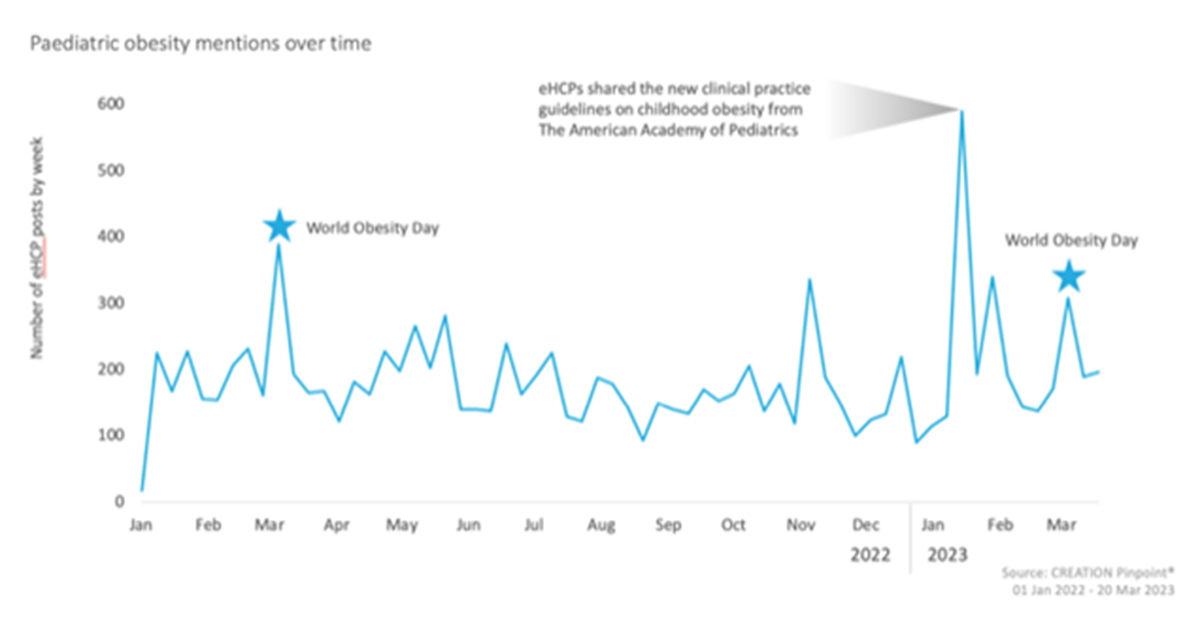AAP’s obesity guidance sparks increased ‘online debate’ among physicians
Key takeaways:
- New clinical guidance has sparked significant discussion among health care professionals, an analysis showed.
- Some clinicians are supportive of the recommendations, whereas others see them as too reactive.
A 15-month analysis of conversations regarding pediatric obesity among health care professionals online showed that new clinical guidance from the AAP spurred significant debate.
Analysts at the digital insights consultancy Creation Healthcare examined online conversations of more than 4,500 health care professionals (HCPs) from more than 100 countries from January 2022 to March 2023.
The analysis considered then-current events, such as World Obesity Day, the FDA’s Jan. 3 approval of once-weekly semaglutide (Wegovy, Novo Nordisk) for adolescents with obesity and the AAP's updated guidance from Jan. 9, which recommended weight loss medication and to evaluate teens for bariatric surgery
In the “online debate,” Creation reported, some HCPs “perceived a growing trend towards the ‘normalization of obesity’ and an emerging perception of obesity as healthy.” Those HCPs were more likely to believe that parents should take on a greater role in discouraging obesity in their children. Others advocated for a “more inclusive approach to ‘body image’” and emphasized that the issue must be handled with more sensitivity.
“Clinicians are torn, particularly regarding the new guidelines from the American Academy of Pediatrics,” Mark Sullivan, an insights data analyst at Creation Healthcare, said in a press release. “While some are supportive, others argue the guidelines are too reactive. Instead, they want to see prevention of obesity as the cornerstone of guidance. They want more of an emphasis to be placed on education and awareness for parents to equip them with the knowledge and insight that they need to support their children with their weight, by providing moral support, encouraging exercise, letting them consume fewer sugary drinks and minimizing food associations with screen time.”
Even though the discussions were split on various issues, Sullivan said a common thread was a need for a “holistic policy” to reduce child obesity levels.
“There was a broad consensus among experts on both sides of the divide that a holistic approach involving both pharmacotherapy as well as traditional approaches to weight reduction, such as healthy diet and exercise, were key to helping to treat cases of pediatric obesity,” he said.

